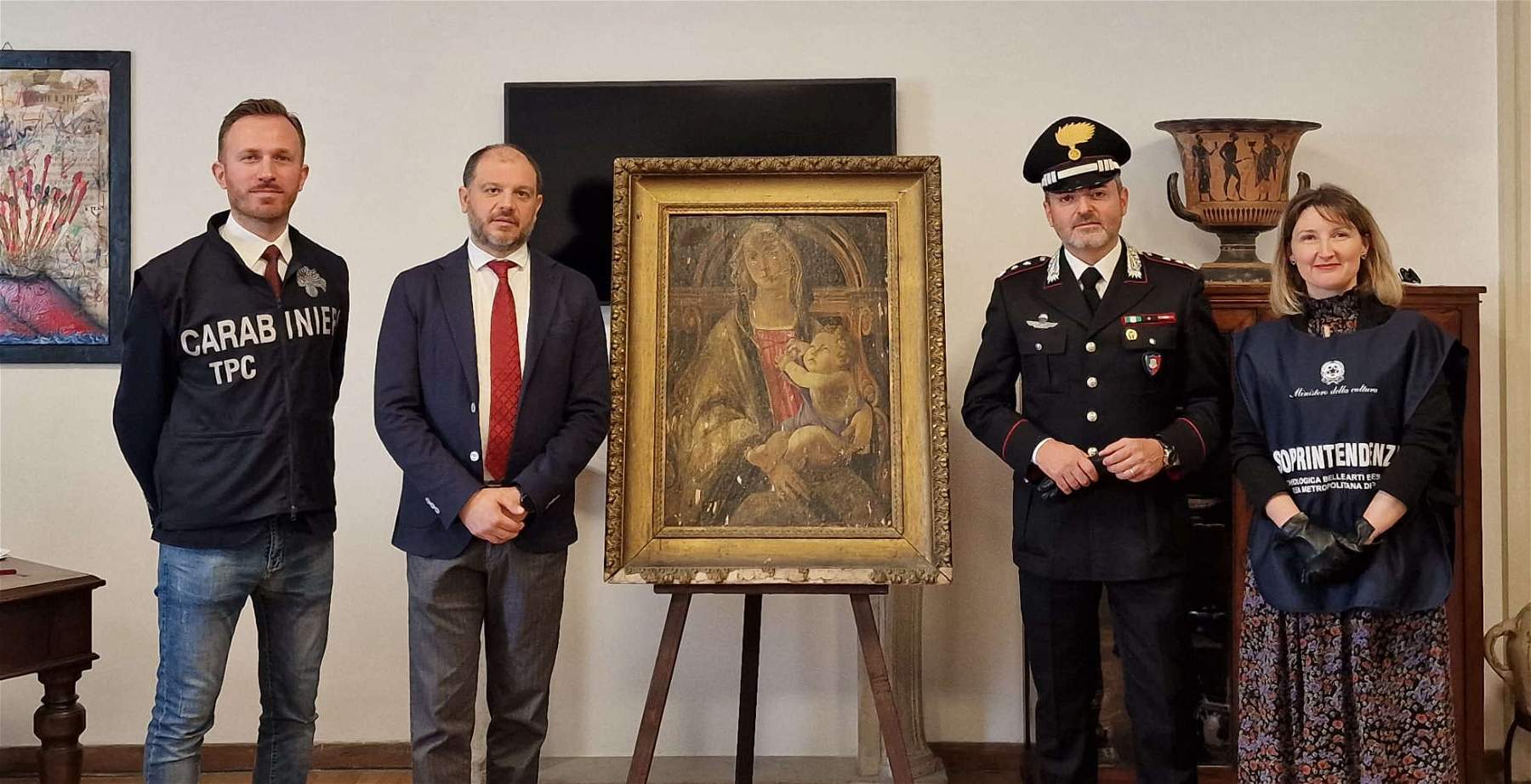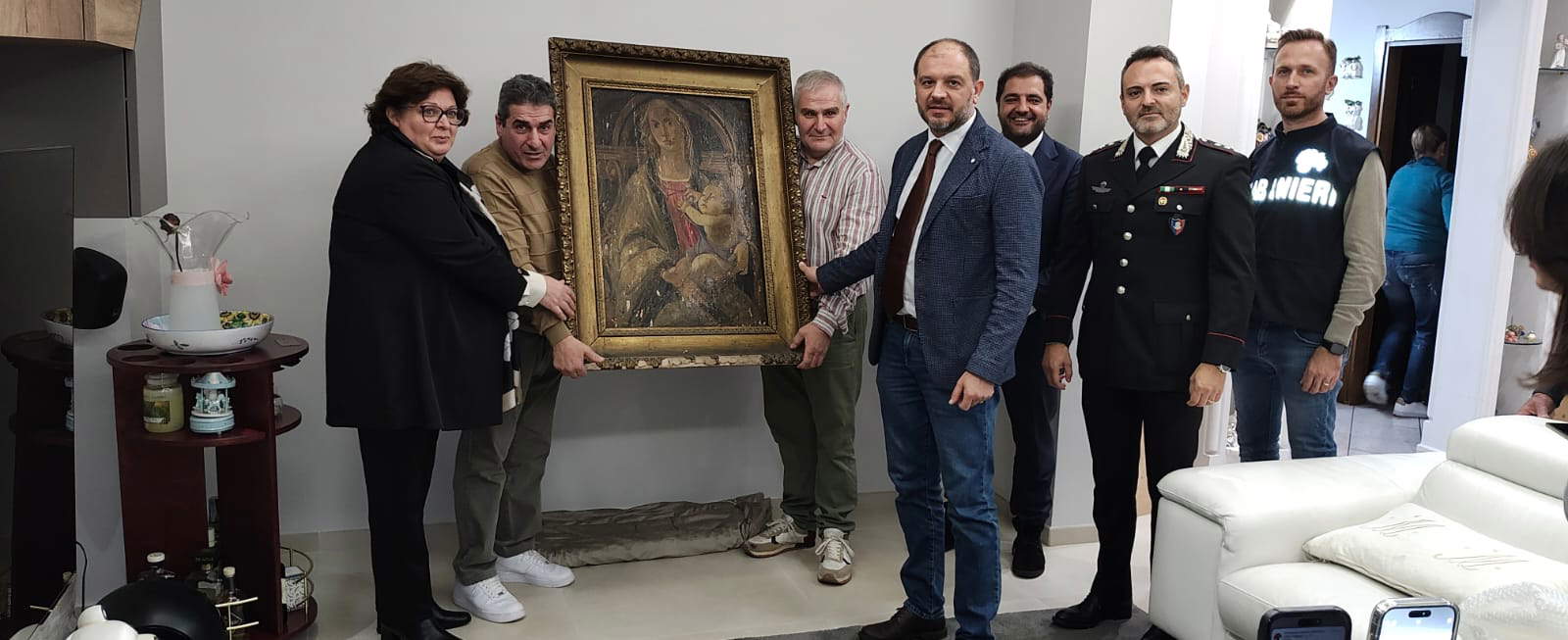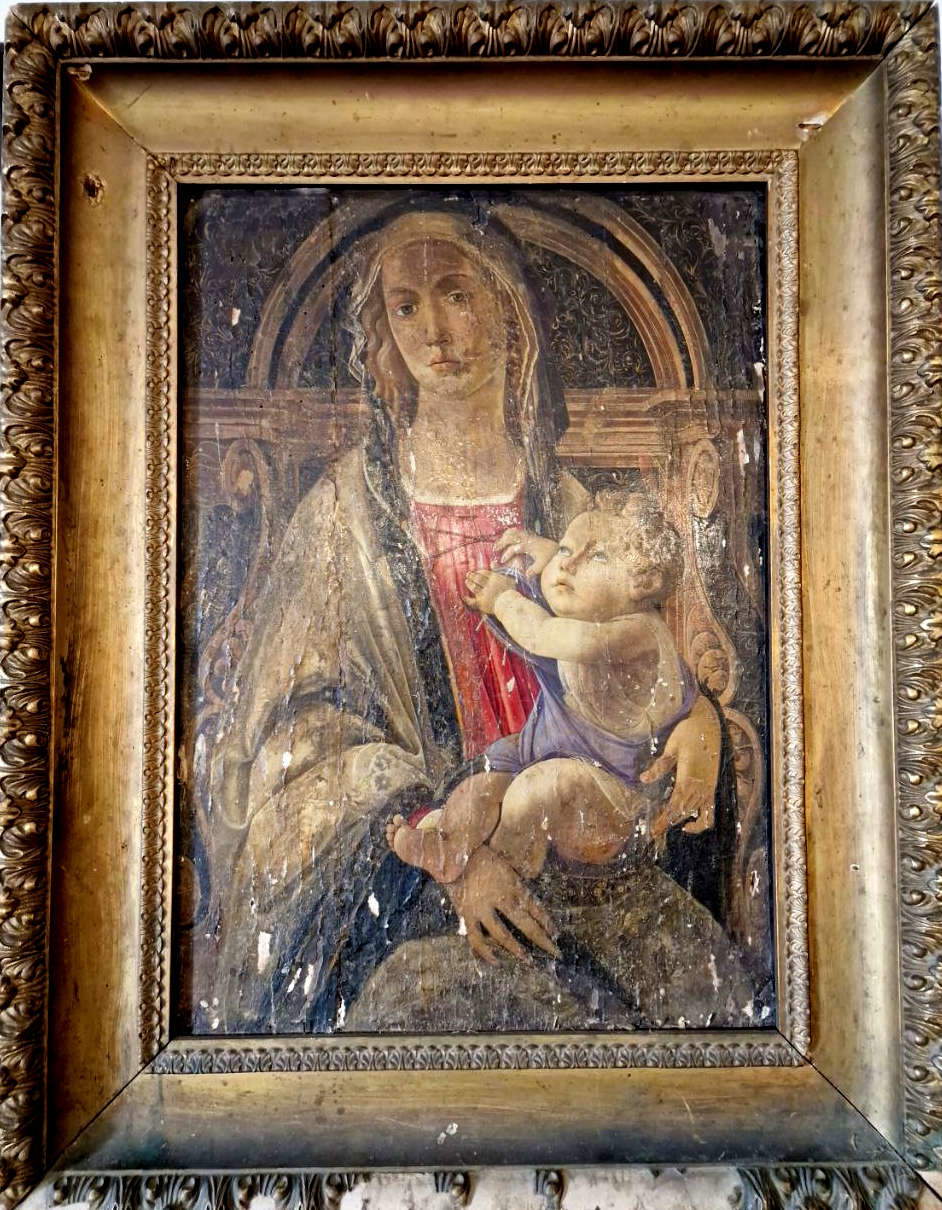Naples, recovered a Renaissance Madonna attributed to Sandro Botticelli
A Madonna and Child attributed to Sandro Botticelli has been handed over to the state: it is a panel painting that was originally in the chapel of Santa Maria delle Grazie in the town of Santa Maria la Carità (Naples), then later moved to Gragnano and entrusted to the local Somma family. The work was voluntarily handed over in the past few hours to the Carabinieri of the Nucleo Tutela Patrimonio Culturale of Naples, led by Capt. Massimiliano Croce, who entrusted the work to the Soprintendenza Archeologia, Belle Arti e Paesaggio of Naples for the necessary investigations.
The work had been attributed to Botticelli during the last appraisal in the 1960s, but it is so badly reduced that at least at the moment it is difficult to understand whether it is really an autograph work by the great Renaissance painter, or at any rate whether it is all by his hand or made with the help of his workshop. The task of the Superintendency will be precisely to? understand more about it. Similarly, the Superintendency will have to determine whether the transfer from the chapel to the Somma family took place in a regular manner.
The work, which has been bound since 1931 (the notification was later confirmed in 1941 and then in 1968), is in a very precarious state of preservation: there are evident detachments of the pictorial film, abrasions, chromatic alterations, color falls, and oxidation of the varnishes. It will be up to the Central Institute for Restoration to try to save what can be saved, and once the work is finished it will be exhibited (it is not yet known where, probably in a Neapolitan museum). The attribution to Botticelli is due to Raffaello Causa, superintendent of the Campania Galleries in the 1960s, believing it to be a work from around 1470, thus a youthful work. If it is indeed a work by Botticelli, it could be a painting commissioned by the court of Naples. In any case, it is a work well known to the scholarly literature: it appears, for example, in the complete catalog of Botticelli’s work published by Nicoletta Pons in 1989. In 1978, however, British art historian Ronald Lightbown believed it was donated to the Oratory of Gragnano by Pope Sixtus IV: if so, it would be a painting executed by Botticelli during his stay in Rome, in the ninth decade of the fifteenth century (1481-1482). The composition is derived from that of the Raczinsky tondo in Berlin. Scholar Cristina Acidini, in her 2001 book Botticelli: allegorie mitologiche (Botticelli: Mythological Allegories ), also speaks of a work of likely Roman provenance.
Also taking part in the work’s recovery operations were the Soprintendenza’s art historian official, Marianna Merolle, for an initial assessment of the work’s conservation status, and Gragnano’s mayor, Nello D’Auria, for the delicate mediation phase with the private owners of the property. Superintendent Mariano Nuzzo collected the painting held by the Somma family and confirmed that “the work will be entrusted to the care of an Institute of the Ministry of Culture specialized in the restoration of works of art in order to start a process of diagnostic analysis, study and enhancement of the painting.”



 |
| Naples, recovered a Renaissance Madonna attributed to Sandro Botticelli |
Warning: the translation into English of the original Italian article was created using automatic tools. We undertake to review all articles, but we do not guarantee the total absence of inaccuracies in the translation due to the program. You can find the original by clicking on the ITA button. If you find any mistake,please contact us.



























